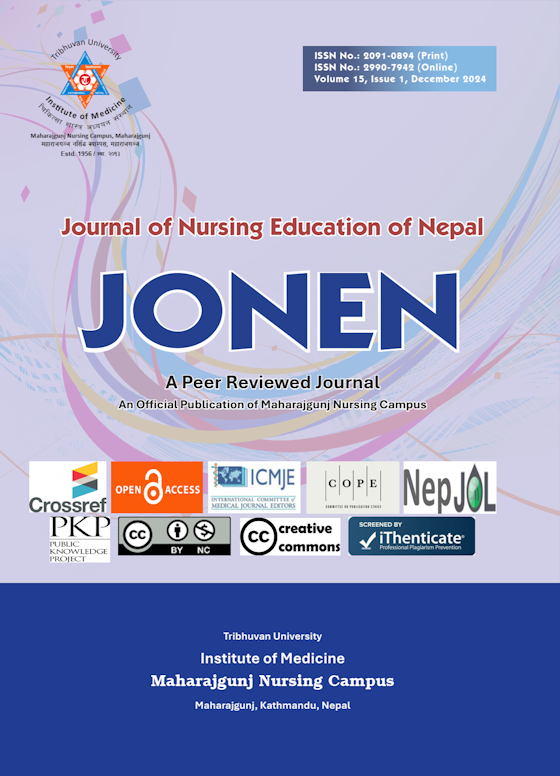Barriers in Seeking Treatment among People with Alcohol Problem in a Selected Ward of Dharan
DOI:
https://doi.org/10.62143/rk027v84Keywords:
Alcohol problem, barriers to treatment, seeking treatmentAbstract
Introduction: One of the most important global addiction demands is an alcoholic beverage. In developing countries like Nepal, alcohol intake tends to be a major problem because of various socio-cultural practices, lack of adequate awareness for alcohol-related problems, and the emergence of social drinking patterns, a large majority of individuals with problematic drinkers do not seek treatment. This study aimed to analyze barriers in seeking treatment among people with alcohol problems and to find out association between socio- demographic factors and barriers in seeking treatment among people with alcohol problem in a selected ward of Dharan.
Methods: A cross- sessional study was conducted in Dharan17 and samples were selected using the snowball sampling method. Ethical clearance was taken from the Institution Review Committee (IRC) of BPKIHS (IRC number: IRC/1576/019). Each participant was interviewed by the researcher herself using the Performa in a separate area. Data collection was undertaken in 2 weeks. A total of 104 samples were screened by the (Cut down, annoyed, Guilty and Eye Opener) CAGE questionnaire. A score of 2 or greater ‘Yes’ from CAGE, considered clinically significant with alcohol use problems. The Barrier to Treatment Inventory (BTI) scale was used to assess barriers. Mean, median, standard deviation, percent, and frequency were used to describe demographic data and Barriers in seeking treatment. Independent sample T-test, ANOVA, Multiple Linear Regression Analysis were adopted to find out the association between dependent and independent variables.
Results: The majority of the subjects were male (73%), married (77%), and Janjati (60%). Labor was highest among all the occupations (38%). “Absence of problem” barrier in seeking treatment predominated by a mean scores of 71%. Further a significant association was found with family income/ month and barriers in seeking treatment (p-value 0.01).
Conclusion: The study findings conclude the absence of a problem as a major barrier in seeking treatment. Barriers in seeking treatment tend to decrease as income increases.
References
NA
Downloads
Published
Issue
Section
License
Copyright (c) 2025 Journal of Nursing Education of Nepal

This work is licensed under a Creative Commons Attribution-NonCommercial 4.0 International License.









